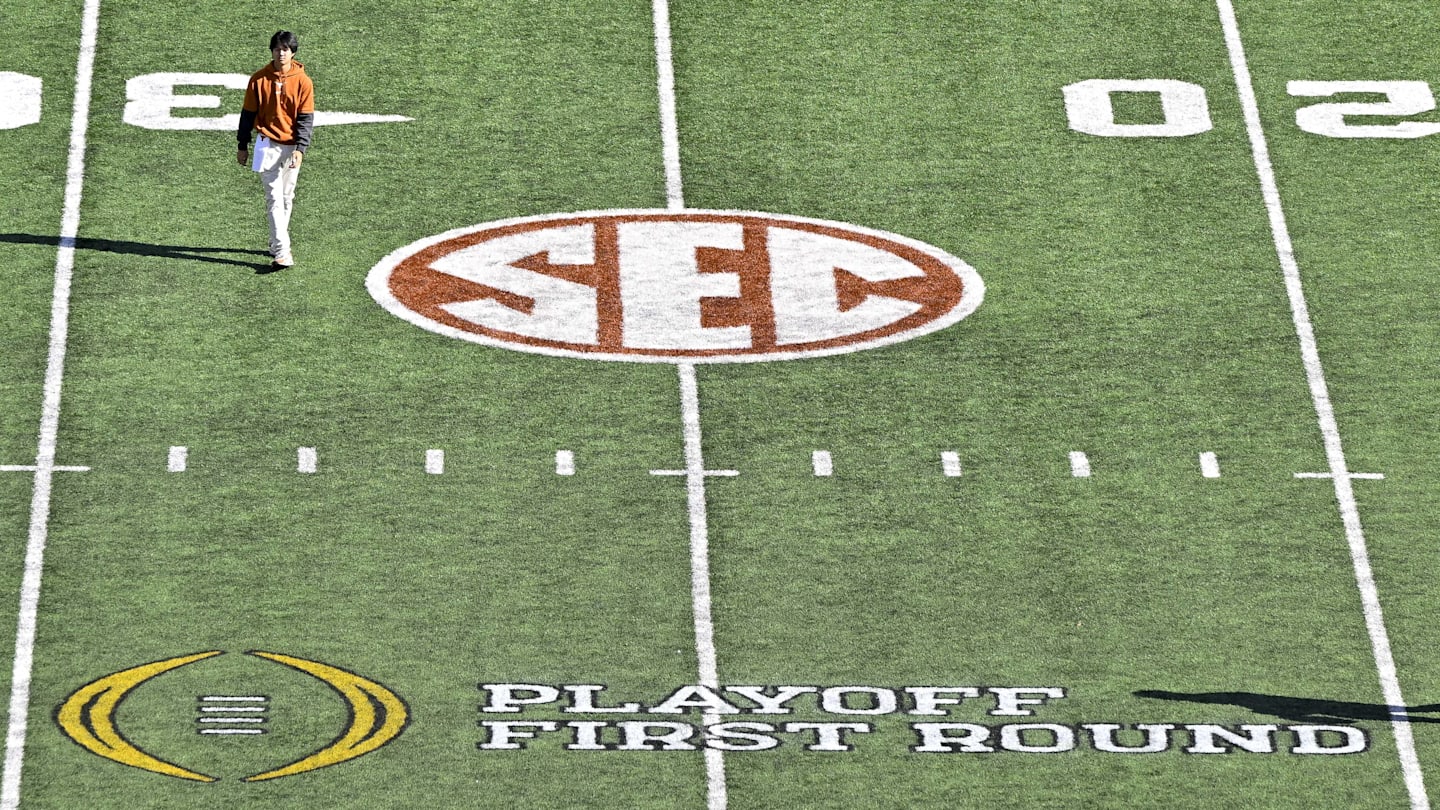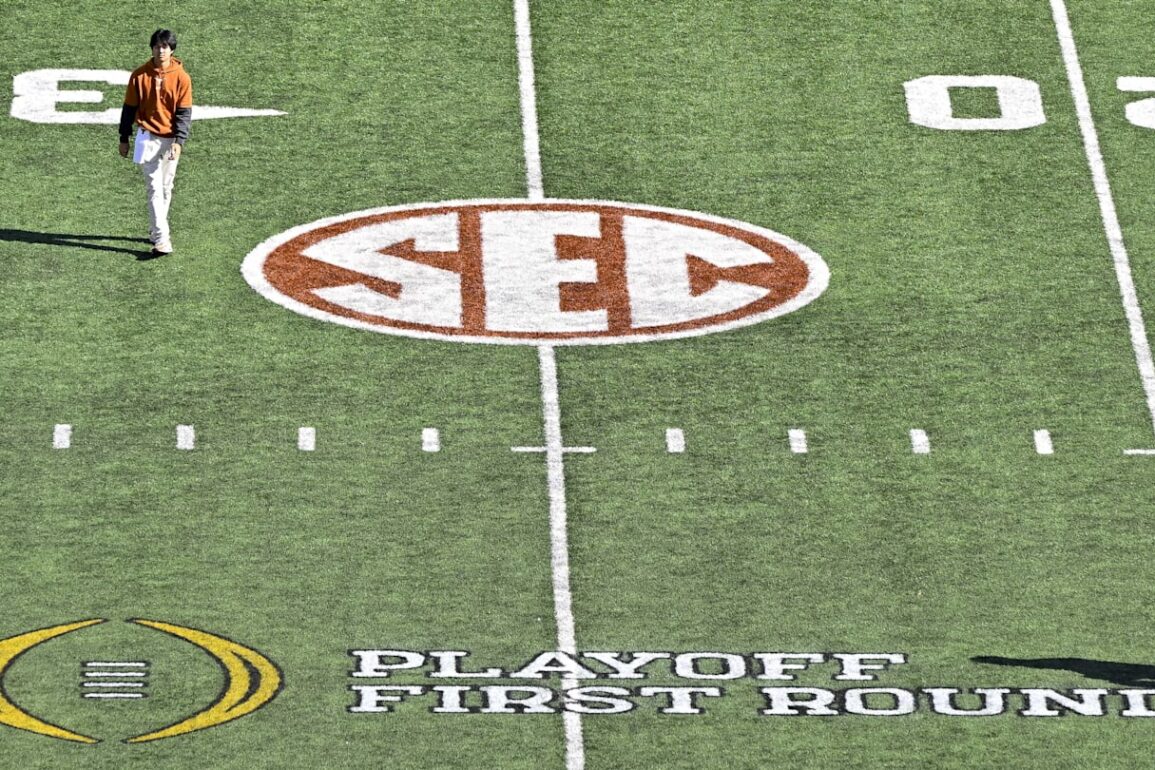
MIRAMAR BEACH, Fla. — At the high end of college football, there is only one constant: the quest for more money. It has torn conferences asunder, made a mockery of the map, turned campus leaders into network toadies and pushed the education envelope past splitting.
Naturally, the involved parties still don’t have enough. Finally having to pay the work force can necessitate sending the train out in search of more gravy.
Thus the next big idea revolves around expanding the College Football Playoff (after a very brief stay at 12 teams), and perhaps also expanding the number of qualifying games for said playoff. The tentative master plan, if you can call it that, is as follows:
The Power 4 conferences want at least 14 playoff teams, and very likely 16. The two most powerful members of the Power 4, the Big Ten and Southeastern Conference, want to stack the deck with four automatic bids each to the expanded playoff. And if they get those automatic bids, the leagues also are entertaining the idea of three qualifying games: the top two teams in each of those leagues would meet for the championship and get the top two bids; meanwhile, the third-place team would play the sixth-place team and the fourth-place team would play the fifth-place team, with the winners getting the other two automatic bids.
You know what that would mean: getting the likes of the Iowa Hawkeyes in contention for a playoff bid. Try to contain your excitement.
Last season, Iowa and the Illinois Fighting Illini finished tied for fifth in the Big Ten at 6–3. If the play-in games had been around last season, both of those teams would have been in action in early December trying to make it into the CFP field. Depending how the league chose to break that tie—overall record favored the Illini—the Big Ten’s championship weekend lineup would have been: the Oregon Ducks vs. Penn State Nittany Lions for the title, as it actually played out; the No. 3 seed Indiana Hoosiers vs. No. 6 Iowa; and No. 4 seed Ohio State Buckeyes vs. No. 5 Illinois.
If they had met with a playoff berth on the line and Iowa had beaten Indiana, then a four-loss team that was defeated by the 5–7 Michigan State Spartans and 5–7 UCLA Bruins would have captured an automatic bid. In the SEC, the first task would have been breaking a six-way tie between 5–3 teams for fourth, fifth and sixth place—then watching some combination of the Alabama Crimson Tide, LSU Tigers, South Carolina Gamecocks, Ole Miss Rebels, Missouri Tigers and Texas A&M Aggies battle for bids.
There are Las Vegas casino cocktails less watered down than that playoff would be. But in pursuit of more cash—from adding a ninth SEC league game to adding these play-in games—there is an appetite for that destruction of drama.
(That plus a suddenly weird aversion to a human selection committee. This has become like a segment of the population suddenly distrusting the measles vaccine. Amazing the destruction that an Alabama exclusion last season can do to rational thought in SEC country—even though the Tide lost by three touchdowns to 6–7 Oklahoma and never led 7–6 Vanderbilt.)
Yet and still, such a format has its advocates—if, that is, a 16-team playoff with multiple automatic bids comes to fruition. None other than SEC commissioner Greg Sankey, the most important voice in the sport, is open to considering it. (“Advocate” might be too strong a word for Sankey.)
“I think the word ‘hope’ is at the center,” Sankey said. “How do you bring people into the conversation late in the season in this changing environment? Could you have play-in type games before you’re in the CFP selection? That’s about building interest and giving hope. Whether that’s the ultimate destination, we’ll see.”
Oklahoma Sooners athletic director Joe Castiglione, whose program figures to be closer to sixth in the SEC than first in 2025 and beyond, might be closer to the advocate role.
“From what I’ve seen so far, it can be good,” Castiglione says. “It keeps more teams in the hunt as long as possible and when teams are playing difficult schedules, we’re talking about the difference of one loss or maybe one more quality win that might vault them into a spot they might not have been otherwise, then it becomes attractive.
“The reverse of that too is the risk for teams that already may feel like they’re in the position to gain a playoff spot and then having to play a game and potentially risking that. So we’re trying to weigh both sides of it and ultimately make the decision that’s best.”
In this regard, the integrity and competitiveness of the regular season is in the eye of the beholder. As Castiglione states, more teams (and their fan bases) are in the mix longer. But at some point of diminishing returns, maintaining the ardor of the sixth-place fan base might not be worth the trade-off of producing effort-optional games late in the season for more serious title contenders who are largely assured of a top-four bid.
Prolonging fan interest for some programs could lead to waning fan interest for others. Moving to 16 teams and creating made-for-TV play-in games would diminish drama at the top of the food chain. It would smack of gimmickry. And it would be based on a fundamentally flawed premise: that there are multiple automatic bids to be had for some conferences—two in particular—that have declared themselves more equal than others.
This post was originally published on this site be sure to check out more of their content.








